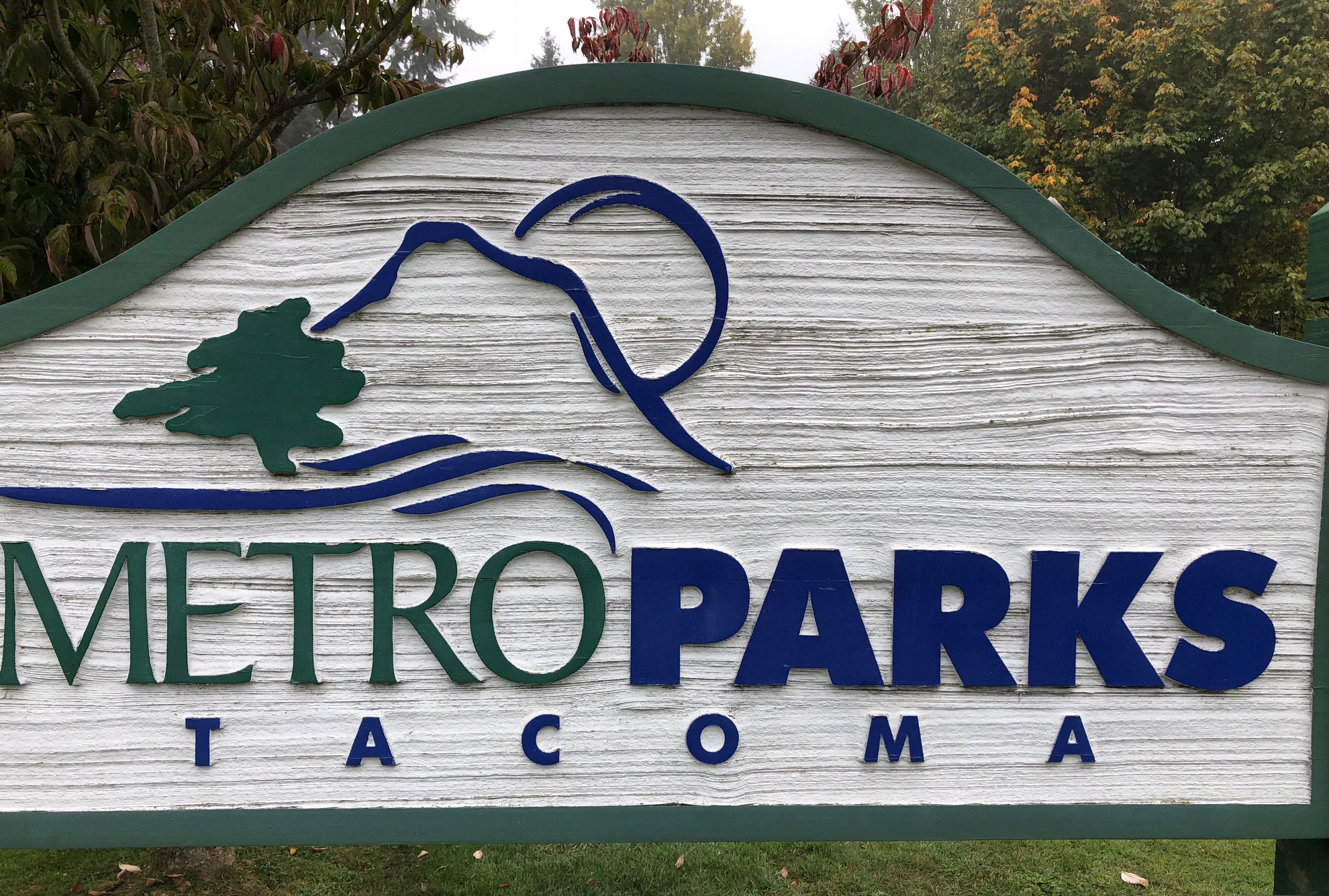What became Tacoma Nature Center was born out of a decade of activism; March 15 reception to kick off weeks of celebration events & programs
For years, Tacoma’s Snake Lake didn’t rate more attention than a wasteland, its wet and brushy surroundings most often penetrated by youngsters who bushwhacked in to fish, catch frogs or, in especially frigid winters, dared to skate across on ice.
The heart of the serpentine water body had belonged to Metro Parks Tacoma since 1928, acquired as part of a larger parcel that extended west to Orchard Street. But except for a short time after 1936, when a Works Progress Administration crew cleared a spot for an archery range – the site of a statewide meet later that year – the park property was neglected for decades.
That all changed in spring 1969 when leaders of Tacoma’s budding environmental movement set out to preserve what is now a treasured resource: Tacoma Nature Center.
It took ten more years of planning and lobbying for public money before the official opening of Snake Lake Nature Center, as it was called. A small crowd bundled in parkas and rain gear stood shoulder to shoulder, surrounded by brush, at the April 1979 dedication ceremony outside one of four small viewing shelters, or blinds, which had been erected on the lake’s western shore. (None of the shelters still exist.)
The original 53.9 acres – it’s now 71 – offered a network of trails and bridges, which could be opened to allow canoes to pass through. Metro Parks hired one of the preserve’s chief advocates, Bob Ramsey, a landscape architect, as a part-time manager. He worked out of his Honda station wagon until more than a year later, when Tacoma Public Schools donated the first of two surplus portable classrooms as headquarters. They were supplemented by vault toilets. The current 9,000-square-foot interpretive center opened in 1992, built with money from a 1986 taxpayer-backed bond issue.


Today, some 40 years after its official opening, the center is recognized as a cradle of environmental awareness, aiming as it does to introduce children and young families to the importance of wetlands and wildlife conservation in an urban setting.
“We all owe a great debt to the farsighted people who stepped in to save Snake Lake when it could have been filled in to make way for Highway 16,” said Aaron Pointer, president of the five-member Metro Parks Tacoma Board of Commissioners. “Their efforts to preserve this urban oasis should be a model for all because of the critical need to protect and sustain the natural world for future generations.”
As President Pointer noted, the nature center exists because of the persistence of dedicated volunteers who valued the site, especially as a wetland science laboratory for students. Many were members of the newly formed Tahoma Audubon Society, which initially shared office space in the donated portable classrooms.
One of those Audubon members was Richard Perkins, now 85, who at that time taught biology at Tacoma Community College. “The neat thing about this whole thing was there were so many people concerned about the environment and the potential destruction of nature,” he said recently.
Marie Churney, 79, then a professor at Pacific Lutheran University, in 1974 joined one of a succession of committees that preceded the center’s opening. Both she and Perkins brought college students to Snake Lake. Churney recalled sampling the water and identifying native plants there. A big benefit was the site’s accessibility, she said.
Unfortunately, many of the people involved in the campaign to preserve Snake Lake have passed away. But an informal history of the center’s first 15 years stored in the Tacoma Nature Center’s archives details the developments that precipitated the preservation campaign.
In the late 1960s, Tacoma Public Schools began planning construction of what is now Foss IB World School, on what locals had dubbed Tightwad Hill (because it afforded free views of baseball games above Cheney Stadium’s right field fence.)
Thelma Gilmur – who was a Tacoma teacher, a Tahoma Audubon founder and first chairperson of the group’s conservation committee – together with Ramsey and another Audubon member, in 1969 drew up a proposal asking the Tacoma School Board to save Snake Lake as a learning laboratory for Foss and other schools.
About the same time, the state Department of Transportation had drawn up plans to fill a portion of the lake to make way for State Route 16. And Tacoma public works officials wanted to relocate and widen what is now Tyler Street, adjacent to the lake, to increase the arterial’s capacity.


Ramsey and others rallied conservation-minded Tacomans to join forces to preserve the wetland. One was William Daugherty, an Audubon member, whose recollections are included in the center’s informal history.
“Although my roots are firmly in Tacoma, I was unacquainted with Snake Lake – even its existence – until the 1970s. Persons more knowledgeable and with far greater vision than I saw it as a natural asset while I saw it more for what it had been: a tree-hidden sort of aquatic junk yard.”
Daugherty also described the lake as an “elongated trough of dirty water.” “The only thing I had known it good for was, in cold enough winters, ice skating. I so used it once, avoiding the tires and discarded rake handles protruding through the firm, fixed surface.”
It didn’t take long for Daugherty to become convinced of the lake’s value, however. Led by Ramsey and others, advocates persuaded the state transportation officials to build a freeway bridge over the lake instead of filling it in. Tyler was widened, but trees on the west side of the lake were preserved. Tacoma Public Schools abandoned plans to build Foss sports fields on its property northeast of the lake and relinquished some land to Metro Parks. And before the preserve officially opened, most of the refuse was removed from the marsh.
In the beginning, the center was a bare-bones operation, dependent largely on volunteers. Ramsey’s job eventually turned full time. He laid the groundwork for several activities the center carries on to this day, including guided nature walks, summer day camps, Girl Scout workshops and winter excursions to Mount Rainier National Park for snowshoeing and sledding.
By 1984, the center’s value to the community had become apparent. Eve Dumovich, writing in the Tacoma News Tribune, described Snake Lake as “an island of wilderness in a sea of concrete.”
Former Metro Parks recreation director Margaret McCormick, now retired, became Ramsey’s boss in the 1980s. At their first meeting, McCormick, who was younger than Ramsey, was taken aback. “He said to me: ‘You know it doesn’t matter what you tell me. I’m going to do what I want.’” As it turned out, his dedication served Metro Parks well. “He made a silk purse out of a sow’s ear,” she said. “But for Bob Ramsey and his absolute stubbornness, we wouldn’t have had a nature center.”
On the job, Ramsey regularly patrolled the grounds wearing a Smokey Bear-style campaign hat and green uniform to underscore his authority.
In a tribute before his retirement in 1987, the News Tribune published a portrait of Ramsey in the hat, and holding a lantern, his bright blue eyes starkly contrasting his trim white beard and mustache.
Jerry Cummings, who wrote the accompanying article, described Ramsey as “straightforward, starchy, witty and articulate.”
She went on to say: “Ramsey, known as the Old Ranger, talks about the center as if it were his child…He helped to create it and was there at its conception. He nursed, nurtured and watched it grow.”
Early on, Ramsey established a junior ranger program. Winfield Giddings, whose parents are charter members of Tahoma Audubon, recalled being one of its first two young graduates. Lessons were on Saturday mornings. Ramsey, Giddings said, was an “old school naturalist,” keen on all manner of wild things.
He also was a World War II veteran and quite a character. In summer, he’d open the windows in the portable classroom, but there were no screens, Giddings said. Nor were there fly swatters, apparently. “The Old Ranger would sit at his desk with a knotted length of rope. He had learned how to aim and snap that rope to kill flies when he was in the army.”
Special exhibits, programs mark 40th
Everyone is invited to an opening reception at the center from 5 to 7 p.m. on March 15. All are welcome to drop in and meet some of the people involved in the center over 40 years. A timeline marking great moments in the center’s history will be on display as well.
Other programs and exhibits include an awards reception for the Tahoma Audubon bird drawing contest; “Reflections of Snake Lake,” an exhibit to which anyone can submit their own reflections; Frog Fest in April; Crafty Critters in May; and the Family Adventure Challenge, a game running July 8 through Aug. 16.
More details here – https://www.metroparkstacoma.org/tacomanaturecenter/.
– Metro Parks








